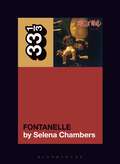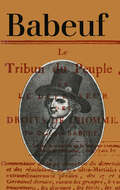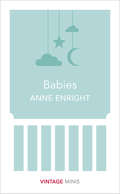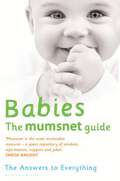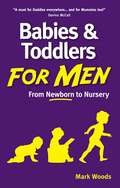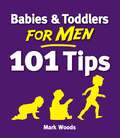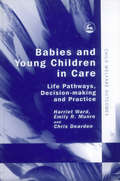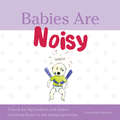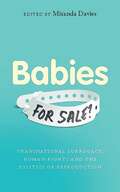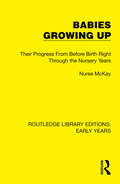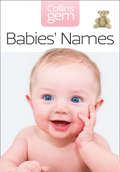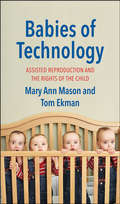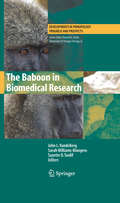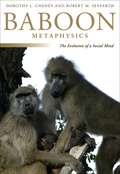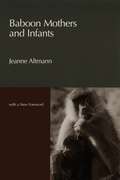- Table View
- List View
Babes in Toyland’s Fontanelle (33 1/3)
by Selena ChambersBabes in Toyland was one of the most influential and underrated bands of the 1990s. They rode the wave of the Minneapolis grunge scene crafting a unique sound composed of self-taught instrumentation and unabashed banshee raging vocals. Their stage presence was enigmatic, their lyrics vitriolic, and their Kinderwhore fashion ironic and easy to emulate. But what made them most inspiring was their ethos and a unique brand of sisterhood that inspired fans to create Riot Grrl and form legendary bands such as 7 year Bitch, Bikini Kill, and Hole.Despite the media's politicization of them as an "all-female" band, the Babes insisted their music wasn't a political statement but about personal expression. They would dismiss labeling their act as feminist, but their actions sent a positive message of what a female space within music could look like. Now, almost 30 years after their most seminal record, Fontanelle, was released, the legend of the band is being resurrected and re-spun to reclaim their proper space and context in the history of music and women in rock.
Babes in Toyland’s Fontanelle (33 1/3)
by Selena ChambersBabes in Toyland was one of the most influential and underrated bands of the 1990s. They rode the wave of the Minneapolis grunge scene crafting a unique sound composed of self-taught instrumentation and unabashed banshee raging vocals. Their stage presence was enigmatic, their lyrics vitriolic, and their Kinderwhore fashion ironic and easy to emulate. But what made them most inspiring was their ethos and a unique brand of sisterhood that inspired fans to create Riot Grrl and form legendary bands such as 7 year Bitch, Bikini Kill, and Hole.Despite the media's politicization of them as an "all-female" band, the Babes insisted their music wasn't a political statement but about personal expression. They would dismiss labeling their act as feminist, but their actions sent a positive message of what a female space within music could look like. Now, almost 30 years after their most seminal record, Fontanelle, was released, the legend of the band is being resurrected and re-spun to reclaim their proper space and context in the history of music and women in rock.
Babette's Feast (BFI Film Classics)
by Julian BagginiOn the face of it, Gabriel Axel's Babette's Feast (1989) is a film in which the eyes – and mouths – of religiouszealots are opened to the glories of the sensual world. It is a critique of what Nietzsche called life-denying religion in favour of life-affirming sensuality. But to view the film in that way is to get it profoundly wrong. In his study of the film, Julian Baggini argues that Babette's Feast is not about the battle between religiosity and secularity but a deep examination of how the two can come together. Baggini's analysis focuses on themes of love, pleasure, artisty and grace, to provide a rich philosophical reading of this most sensual of films.
Babette's Feast (BFI Film Classics)
by Julian BagginiOn the face of it, Gabriel Axel's Babette's Feast (1989) is a film in which the eyes – and mouths – of religiouszealots are opened to the glories of the sensual world. It is a critique of what Nietzsche called life-denying religion in favour of life-affirming sensuality. But to view the film in that way is to get it profoundly wrong. In his study of the film, Julian Baggini argues that Babette's Feast is not about the battle between religiosity and secularity but a deep examination of how the two can come together. Baggini's analysis focuses on themes of love, pleasure, artisty and grace, to provide a rich philosophical reading of this most sensual of films.
Babies: Vintage Minis (Vintage Minis)
by Anne EnrightBabies: our biggest mystery and our most natural consequence, our hardest test and our enduring love. Anne Enright describes the intensity, bewilderment and extravagant happiness of her experience of having babies, from the exhaustion of early pregnancy to first smiles and becoming acquainted with the long reaches of the night. Everyone, from parents to the mildly curious, can delight in Enright’s funny, eloquent and unsentimental account of having babies. Selected from the book Making Babies by Anne Enright VINTAGE MINIS: GREAT MINDS. BIG IDEAS. LITTLE BOOKS.A series of short books by the world’s greatest writers on the experiences that make us human Also in the Vintage Minis series:Fatherhood by Karl Ove KnausgaardMotherhood by Helen SimpsonDrinking by John CheeverSisters by Louisa May Alcott
Babies: The Answers to Everything
by MumsnetBabies: the Mumsnet Guide is an introduction to the strange world of the postnatal, a world of strong emotions and revolting excretions, the sublime and the ridiculous. It is the gathered up, boiled-down wisdom of thousands of mums and the occasional dad who have posted on Mumsnet.com since its launch in June 2000 about everything to do with life after baby.From thoughtful advice about breastfeeding, colic and getting some sleep to debates about parenting gurus and the best form of childcare, by way of a fair bit of gore and the odd bit of flagrant silliness about postnatal vaginal circumference and baby names, Babies: the Mumsnet Guide contains the advice, thoughts, experiences and random burblings of thousands of parents. Parents who have done a lot of the worrying for you already.This is the indispensible guide from the frontline of parenting.
Babies and Toddlers for Men: From Newborn to Nursery (Crimson Publishing Ser.)
by Mark WoodsBecoming a father is a moment in a man's life like no other. The love, the pride, the joy and occasionally the fear stirred up inside us by the complex little being that moves into our home and our relationship takes some serious getting used to. And then there's the really tough stuff like putting up a travel cot and installing a car seat. Despite all this though we are often given more advice when we buy a phone than when we become a Dad...until now. This is the indispensable manual every new dad needs from newborn to nursery, this is Babies and Toddlers for Men. Written by Mark Woods, author of the best selling Pregnancy for Men and proud father of two, this utterly readable guide tells you how it is in a frank and funny way that will leave you educated and energised to take on the next amazing stage of being a Dad.
Babies and Toddlers for Men: 101 Tips
by Mark WoodsBecoming a father is a moment in a man's life like no other. The love, the pride, the joy and occasionally the fear stirred up inside us by the complex little being that moves into our home and our relationship takes some serious getting used to. And then there's the really tough stuff like putting up a travel cot and installing a car seat. Despite all this though we are often given more advice when we buy a phone than when we become a Dad...until now. This is the indispensable manual every new dad needs from newborn to nursery, this is Babies and Toddlers for Men. Written by Mark Woods, author of the best selling Pregnancy for Men and proud father of two, this utterly readable guide tells you how it is in a frank and funny way that will leave you educated and energised to take on the next amazing stage of being a Dad.
Babies and Young Children in Care: Life Pathways, Decision-making and Practice (PDF)
by Chris Dearden Emily Munro Harriet WardBabies and very young children in care often experience several changes of placement and carer, which can have a negative impact upon their long-term ability to develop secure attachments. Babies and Young Children in Care examines why babies enter care or accommodation and why securing their long-term future can be a lengthy process. It analyses the circumstances, characteristics and experiences of these young children before, during and after being looked after, including reasons for changes of carer and placement disruptions. It looks at how young children are affected by the lack of stability in their lives, and explores the consequences of reunification with their parents after long periods in care. Drawing on interviews with birth parents, carers and social care professionals, the authors trace the complex decision-making process that influences these children's early experiences and the impact this has on their later development and well-being. They offer a clear explanation of the outcomes of services for very young children and signpost messages for practice. This book is a key text for researchers, practitioners, policy makers and social care managers.
Babies Are Noisy: A book for big brothers and sisters including those on the autism spectrum (PDF)
by Anne-Marie HarrisonWhen Andre starts to notice Mummy's tummy getting bigger, it's the start of lots of changes for his family. My Baby is on his way and he's bringing lots of noise with him! This engaging illustrated children's book is ideal for preparing young children age 3+ on and off the autism spectrum for the arrival of a new brother or sister. Covering everything from trips to the hospital, what to expect when the baby arrives and the fun, family times to look forward to, 'Babies are Noisy' is mindful of how children with autism think, learn and experience the world and is full of strategies for coping with the sensory issues and routine changes that a new baby brings. Reflecting the real life situations that families with a child with autism find themselves faced with, this book can be read with parents and professionals to prepare the child for the arrival of their new sibling.
Babies for Sale?: Transnational Surrogacy, Human Rights and the Politics of Reproduction
by Miranda DaviesTransnational surrogacy – the creation of babies across borders – has become big business. Globalization, reproductive technologies, new family formations and rising infertility are combining to produce a 'quiet revolution' in social and medical ethics and the nature of parenthood. Whereas much of the current scholarship has focused on the US and India, this groundbreaking anthology offers a far wider perspective.Featuring contributions from over thirty activists and scholars from a range of countries and disciplines, this collection offers the first genuinely international study of transnational surrogacy. Its innovative bottom-up approach, rooted in feminist perspectives, gives due prominence to the voices of those most affected by the global surrogacy chain, namely the surrogate mothers, donors, prospective parents and the children themselves. Through case studies ranging from Israel to Mexico, the book outlines the forces that are driving the growth of transnational surrogacy, as well as its implications for feminism, human rights, motherhood and masculinity.
Babies for Sale?: Transnational Surrogacy, Human Rights and the Politics of Reproduction
by Miranda DaviesTransnational surrogacy – the creation of babies across borders – has become big business. Globalization, reproductive technologies, new family formations and rising infertility are combining to produce a 'quiet revolution' in social and medical ethics and the nature of parenthood. Whereas much of the current scholarship has focused on the US and India, this groundbreaking anthology offers a far wider perspective.Featuring contributions from over thirty activists and scholars from a range of countries and disciplines, this collection offers the first genuinely international study of transnational surrogacy. Its innovative bottom-up approach, rooted in feminist perspectives, gives due prominence to the voices of those most affected by the global surrogacy chain, namely the surrogate mothers, donors, prospective parents and the children themselves. Through case studies ranging from Israel to Mexico, the book outlines the forces that are driving the growth of transnational surrogacy, as well as its implications for feminism, human rights, motherhood and masculinity.
Babies Growing Up: Their Progress From Before Birth Right Through the Nursery Years (Routledge Library Editions: Early Years)
by Nurse McKayOriginally published in 1956, Babies Growing Up aims to compress in to a brief yet readable form, the essentials of successful parentcraft at the time, bearing in mind the four elements of developing a new life – physical, mental, emotional and spiritual. It seeks to sum up the essence of the mothercraft advice given over the years through the pages of Woman’s Pictorial and Mother and Home, where some material had appeared previously. It is a comprehensive guide through a baby’s life from birth through the early years and today can be enjoyed as a historical look at parenting and child development in the 1950s.
Babies Growing Up: Their Progress From Before Birth Right Through the Nursery Years (Routledge Library Editions: Early Years)
by Nurse McKayOriginally published in 1956, Babies Growing Up aims to compress in to a brief yet readable form, the essentials of successful parentcraft at the time, bearing in mind the four elements of developing a new life – physical, mental, emotional and spiritual. It seeks to sum up the essence of the mothercraft advice given over the years through the pages of Woman’s Pictorial and Mother and Home, where some material had appeared previously. It is a comprehensive guide through a baby’s life from birth through the early years and today can be enjoyed as a historical look at parenting and child development in the 1950s.
Babies in Groups: Expanding Imaginations
by Ben S. Bradley Jane Selby Matthew StapletonThis is an open access title available under the terms of a CC BY-NC-ND 4.0 International licence. It is free to read on the Oxford Academic platform and offered as a free PDF download from OUP and selected open access locations. Research has shown that young babies - well before they form their first bond to a caring adult - enjoy participating in groups and group processes. Babies in Groups examines the consequences of these findings for science, for early education practice and policy, and for adult psychotherapy. The authors report research showing the extensive capacity of preverbal infants for group-communication in all-baby trios and quartets, backed by findings about primate sociability, the social brain, cultural histories, and human evolution. These studies open up new ways of imagining human development as fundamentally group-based. In addition, the authors explore the changes that a group-based vision of infancy could bring to early child education and care. They also show how ignoring group contexts in many clinical traditions can distort descriptions of what happens in therapy, producing such unintended consequences as 'mother-blaming' for the future problems an infant may experience as she or he grows up. Finally, the book's appendix summarises the main forms of evidence which falsify claims that science has proven that an inborn gift for dyadic 'intersubjectivity,' or for one-to-one infant-adult attachments, founds human social development.
Babies in Groups: Expanding Imaginations
by Ben S. Bradley Jane Selby Matthew StapletonThis is an open access title available under the terms of a CC BY-NC-ND 4.0 International licence. It is free to read on the Oxford Academic platform and offered as a free PDF download from OUP and selected open access locations. Research has shown that young babies - well before they form their first bond to a caring adult - enjoy participating in groups and group processes. Babies in Groups examines the consequences of these findings for science, for early education practice and policy, and for adult psychotherapy. The authors report research showing the extensive capacity of preverbal infants for group-communication in all-baby trios and quartets, backed by findings about primate sociability, the social brain, cultural histories, and human evolution. These studies open up new ways of imagining human development as fundamentally group-based. In addition, the authors explore the changes that a group-based vision of infancy could bring to early child education and care. They also show how ignoring group contexts in many clinical traditions can distort descriptions of what happens in therapy, producing such unintended consequences as 'mother-blaming' for the future problems an infant may experience as she or he grows up. Finally, the book's appendix summarises the main forms of evidence which falsify claims that science has proven that an inborn gift for dyadic 'intersubjectivity,' or for one-to-one infant-adult attachments, founds human social development.
Babies in Groups
by Robert E. GoodinConsent works moral magic. Things that would otherwise be wrong to do to someone are, with that person's consent, made morally permissible. But what is consent, and how does it work? What can be taken for consent (perhaps wrongly) and with what consequences? How does consent come into being and pass out of it? How can consent be conferred, invoked and revoked? What is the role of social and legal norms in governing consent? How contextually sensitive should those norms be in applying to diverse settings, ranging from sexual encounters to prison hospitals to the poll booth? Those are the sorts of broad questions animating this book. It aspires to provide a comprehensive account of the social practice of consent, informed by deep reading in the history of ideas, philosophy, law, political science and sociology. Consent Matters thus serves, at one and the same time, as a guide for the perplexed social practitioner of consent and as a touchstone for philosophical attempts to theorize and to refine those existing practices.
Babies’ Names (Collins Gem)
by CollinsA brand-new edition of this best-selling guide to over 1,500 first names. Gem Babies’ Names gives the origins of each name, and also lists the most popular girls’ and boys’ names in Britain today. The ideal pocket guide to choosing a name for your baby.
Babies of Technology: Assisted Reproduction and the Rights of the Child
by Mary Ann Mason Tom EkmanMillions of children have been born in the United States with the help of cutting-edge reproductive technologies, much to the delight of their parents. But alarmingly, scarce attention has been paid to the lax regulations that have made the U.S. a major fertility tourism destination. And without clear protections, the unique rights and needs of the children of assisted reproduction are often ignored. This book is the first to consider the voice of the child in discussions about regulating the fertility industry. The controversies are many. Donor anonymity is preventing millions of children from knowing their genetic origins. Fertility clinics are marketing genetically enhanced babies. Career women are saving their eggs for later in life. And Third World women are renting their wombs to the rich. Meanwhile, the unregulated fertility market charges forward as a multi-billion-dollar industry. This deeply-considered book offers answers to the urgent question: Who will protect our babies of technology?
The Baboon in Biomedical Research (Developments in Primatology: Progress and Prospects)
by Suzette D. Tardif Sarah Williams-Blangero John L. VandeBergNonhuman primates have played critical roles in biomedical research, and they are among the few animals whose use in research continues to increase. The scienti?c value of nonhuman primates derives from their close phylogenetic proximity to man and their consequent anatomic, physiologic, and genetic similarities to man. Only nonhuman primates can provide adequate models for many complex physiological and disease processes of humans. The baboon is a relative newcomer to the repertoire of nonhuman primates used in biomedical research. However, in less than 50 years since its ?rst use in the U. S. , it has become one of the most popular laboratory primate species. It is larger than the other widely used monkey species, making it advantageous for many types of experiments and technological developments. It is extraordinarily hardy and highly fecund in captivity. It closely resembles humans in a variety of physiological and disease processes, such as cholesterol metabolism, early stages of atherosclerosis, and alcoholic liver disease. Its chromosomes closely resemble those of humans, and many genes of the two species lie in the same chromosomal order. Among all primates, baboons are the most widely used models for the genetics of susceptibility to complex diseases and they are the ?rst nonhuman primate for which a framework genetic linkage map was established. In addition, the baboon genome is currently being sequenced, and as a result the utility of this species for biomedical research will be dramatically increased.
Baboon Metaphysics: The Evolution of a Social Mind
by Dorothy L. Cheney Robert M. SeyfarthIn 1838 Charles Darwin jotted in a notebook, “He who understands baboon would do more towards metaphysics than Locke.” Baboon Metaphysics is Dorothy L. Cheney and Robert M. Seyfarth’s fascinating response to Darwin’s challenge. Cheney and Seyfarth set up camp in Botswana’s Okavango Delta, where they could intimately observe baboons and their social world. Baboons live in groups of up to 150, including a handful of males and eight or nine matrilineal families of females. Such numbers force baboons to form a complicated mix of short-term bonds for mating and longer-term friendships based on careful calculations of status and individual need. But Baboon Metaphysics is concerned with much more than just baboons’ social organization—Cheney and Seyfarth aim to fully comprehend the intelligence that underlies it. Using innovative field experiments, the authors learn that for baboons, just as for humans, family and friends hold the key to mitigating the ill effects of grief, stress, and anxiety. Written with a scientist’s precision and a nature-lover’s eye, Baboon Metaphysics gives us an unprecedented and compelling glimpse into the mind of another species. “The vivid narrative is like a bush detective story.”—Steven Poole, Guardian “Baboon Metaphysics is a distillation of a big chunk of academic lives. . . . It is exactly what such a book should be—full of imaginative experiments, meticulous scholarship, limpid literary style, and above all, truly important questions.”—Alison Jolly, Science “Cheney and Seyfarth found that for a baboon to get on in life involves a complicated blend of short-term relationships, friendships, and careful status calculations. . . . Needless to say, the ensuing political machinations and convenient romantic dalliances in the quest to become numero uno rival the bard himself.”—Science News “Cheney and Seyfarth’s enthusiasm is obvious, and their knowledge is vast and expressed with great clarity. All this makes Baboon Metaphysics a captivating read. It will get you thinking—and maybe spur you to travel to Africa to see it all for yourself.”—Asif A. Ghazanfar, Nature “Through ingenious playback experiments . . . Cheney and Seyfarth have worked out many aspects of what baboons used their minds for, along with their limitations. Reading a baboon’s mind affords an excellent grasp of the dynamics of baboon society. But more than that, it bears on the evolution of the human mind and the nature of human existence.”—Nicholas Wade, New York Times
Baboon Metaphysics: The Evolution of a Social Mind
by Dorothy L. Cheney Robert M. SeyfarthIn 1838 Charles Darwin jotted in a notebook, “He who understands baboon would do more towards metaphysics than Locke.” Baboon Metaphysics is Dorothy L. Cheney and Robert M. Seyfarth’s fascinating response to Darwin’s challenge. Cheney and Seyfarth set up camp in Botswana’s Okavango Delta, where they could intimately observe baboons and their social world. Baboons live in groups of up to 150, including a handful of males and eight or nine matrilineal families of females. Such numbers force baboons to form a complicated mix of short-term bonds for mating and longer-term friendships based on careful calculations of status and individual need. But Baboon Metaphysics is concerned with much more than just baboons’ social organization—Cheney and Seyfarth aim to fully comprehend the intelligence that underlies it. Using innovative field experiments, the authors learn that for baboons, just as for humans, family and friends hold the key to mitigating the ill effects of grief, stress, and anxiety. Written with a scientist’s precision and a nature-lover’s eye, Baboon Metaphysics gives us an unprecedented and compelling glimpse into the mind of another species. “The vivid narrative is like a bush detective story.”—Steven Poole, Guardian “Baboon Metaphysics is a distillation of a big chunk of academic lives. . . . It is exactly what such a book should be—full of imaginative experiments, meticulous scholarship, limpid literary style, and above all, truly important questions.”—Alison Jolly, Science “Cheney and Seyfarth found that for a baboon to get on in life involves a complicated blend of short-term relationships, friendships, and careful status calculations. . . . Needless to say, the ensuing political machinations and convenient romantic dalliances in the quest to become numero uno rival the bard himself.”—Science News “Cheney and Seyfarth’s enthusiasm is obvious, and their knowledge is vast and expressed with great clarity. All this makes Baboon Metaphysics a captivating read. It will get you thinking—and maybe spur you to travel to Africa to see it all for yourself.”—Asif A. Ghazanfar, Nature “Through ingenious playback experiments . . . Cheney and Seyfarth have worked out many aspects of what baboons used their minds for, along with their limitations. Reading a baboon’s mind affords an excellent grasp of the dynamics of baboon society. But more than that, it bears on the evolution of the human mind and the nature of human existence.”—Nicholas Wade, New York Times
Baboon Metaphysics: The Evolution of a Social Mind
by Dorothy L. Cheney Robert M. SeyfarthIn 1838 Charles Darwin jotted in a notebook, “He who understands baboon would do more towards metaphysics than Locke.” Baboon Metaphysics is Dorothy L. Cheney and Robert M. Seyfarth’s fascinating response to Darwin’s challenge. Cheney and Seyfarth set up camp in Botswana’s Okavango Delta, where they could intimately observe baboons and their social world. Baboons live in groups of up to 150, including a handful of males and eight or nine matrilineal families of females. Such numbers force baboons to form a complicated mix of short-term bonds for mating and longer-term friendships based on careful calculations of status and individual need. But Baboon Metaphysics is concerned with much more than just baboons’ social organization—Cheney and Seyfarth aim to fully comprehend the intelligence that underlies it. Using innovative field experiments, the authors learn that for baboons, just as for humans, family and friends hold the key to mitigating the ill effects of grief, stress, and anxiety. Written with a scientist’s precision and a nature-lover’s eye, Baboon Metaphysics gives us an unprecedented and compelling glimpse into the mind of another species. “The vivid narrative is like a bush detective story.”—Steven Poole, Guardian “Baboon Metaphysics is a distillation of a big chunk of academic lives. . . . It is exactly what such a book should be—full of imaginative experiments, meticulous scholarship, limpid literary style, and above all, truly important questions.”—Alison Jolly, Science “Cheney and Seyfarth found that for a baboon to get on in life involves a complicated blend of short-term relationships, friendships, and careful status calculations. . . . Needless to say, the ensuing political machinations and convenient romantic dalliances in the quest to become numero uno rival the bard himself.”—Science News “Cheney and Seyfarth’s enthusiasm is obvious, and their knowledge is vast and expressed with great clarity. All this makes Baboon Metaphysics a captivating read. It will get you thinking—and maybe spur you to travel to Africa to see it all for yourself.”—Asif A. Ghazanfar, Nature “Through ingenious playback experiments . . . Cheney and Seyfarth have worked out many aspects of what baboons used their minds for, along with their limitations. Reading a baboon’s mind affords an excellent grasp of the dynamics of baboon society. But more than that, it bears on the evolution of the human mind and the nature of human existence.”—Nicholas Wade, New York Times
Baboon Mothers and Infants
by Jeanne AltmannWhen it was originally released in 1980, Jeanne Altmann's book transformed the study of maternal primate relationships by focusing on motherhood and infancy within a complex ecological and sociological context. Available again with a new foreword by the author, Baboon Mothers and Infants is a classic book that has been, in its own right, a mother to a generation of influential research and will no doubt provide further inspiration.
